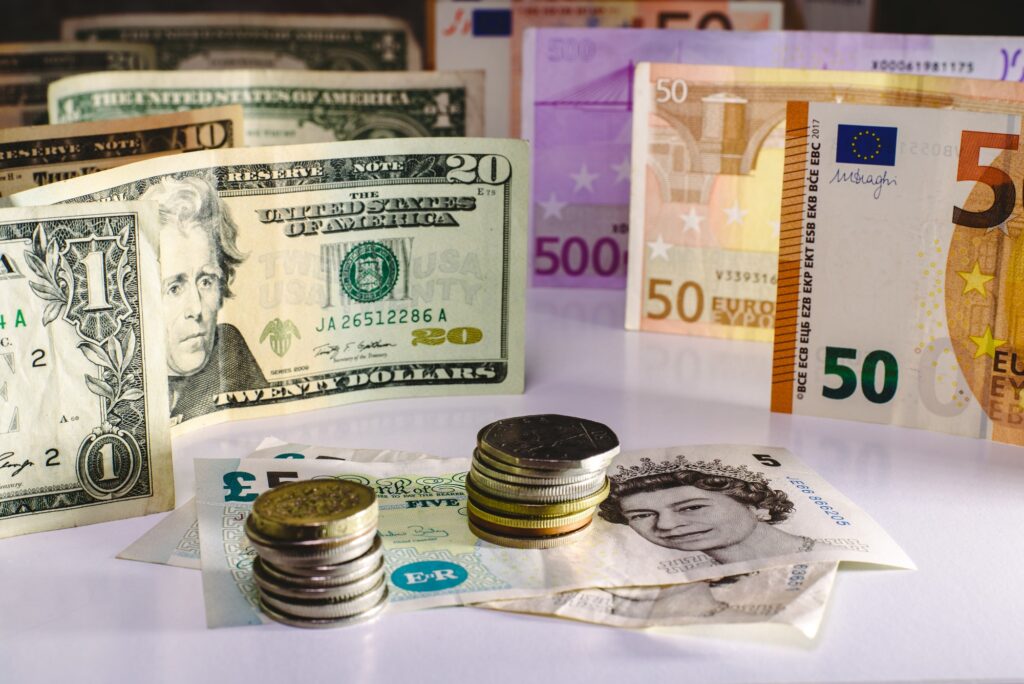|
Getting your Trinity Audio player ready...
|
The dominance of the US dollar is under threat. With China set to emerge as the world’s biggest economy by 2035, and USD foreign reserve holdings at an all-time low, more investors are thinking about the best ways to hedge against a declining dollar.
China’s influence in the Middle East is growing, sparking fears of a direct challenge to the petrodollar. Although the USD remains the de facto currency of international exchange, it is suffering a slow and gradual decline.
By using hedging strategies such as investing in non-US assets or using derivatives, traders can protect their investments from currency risk and take advantage of diversification opportunities.
In this article, we will explore the best ways to hedge against the USD, including currency options, forward contracts, and currency swaps. We will also discuss the pros and cons of each hedging strategy and the risks and benefits of diversifying across different currencies.
What is hedging in finance?
Currency hedging can be thought of as an insurance policy. If your portfolio relies on a particular currency, it could suffer when exchange rates shift. A hedging strategy helps to absorb the impact of changing exchange rates and protect the investor.
Hedging can uncouple ROI from the fate of a specific currency. That is to say, investors can insulate themselves from volatility by investing using multiple currencies, such as euros or yuan.
What is hedging in forex?
Known as a Forex hedge, a foreign exchange hedge is similar to a typical currency hedge but with a particular focus on the foreign exchange market.
Changes in exchange rates can impact a Forex trader’s ROI. There are three main instruments Forex traders can use to mitigate that risk:
Currency options are contracts that award a buyer the right to transact at an agreed exchange rate on or before a specific date. These contracts are said to be popular with traders because they limit risk without restraining the upside. However, a currency option comes at a cost, and will typically charge the buyer a high premium.
Forward contracts are agreements to buy a specific currency by selling another at a pre-agreed price, which is termed the forward rate. This could benefit traders if the forward rate is more favourable than the future value of the currency. It is important to note that forward contracts can be a double-edged sword, as a trader could miss out if the current position becomes more favourable after the agreement is signed.
A currency swap is an agreement between two parties to transfer the value of a loan and its interest from one currency to another. When the swap is agreed upon, an exchange rate is locked in, known as the spot rate. At the end of the swap period, the parties pay the interest on the swapped loan amount. The aim is to hold different currencies at an advantageous interest rate.
Reasons to hedge against the US dollar
When the value of the USD drops, companies that hold US assets or receive revenue in USD can suffer losses. With the yuan gaining momentum as a reserve currency, and the spectre of recession looming over the US, some analysts are recommending a cautious approach which divests from the USD.
Hedging also allows buyers to diversify their portfolios. Although the USD is seen as a haven currency, it is not immune to volatility. By diversifying across different currencies, investors can reduce their exposure to exchange rates and potentially improve returns.
Furthermore, hedging against the USD can help manage risk for businesses that rely on international trade. For example, a US-based exporter that receives payment in euros can use currency hedging strategies to lock in a favourable exchange rate and reduce the risk of currency fluctuations. This can help ensure that the exporter receives more predictable revenue and can plan for future expenses.
By using hedging strategies such as investing in non-US assets or using derivatives, investors can protect their portfolios from currency risk and take advantage of diversification opportunities. For businesses, hedging can help to manage risk and deliver reliable revenue streams. Investors should consult with experienced financial experts to determine the best hedging strategies for their specific needs.
The best ways to hedge against the dollar
To hedge against the USD, investors have a range of options to consider. The first step to consider is diversification across different currencies. Experts suggest investing in currencies forecast to appreciate against the USD, such as the euro, the Japanese yen, and the Swiss franc. This diversification could help to reduce exposure to exchange rates and boost returns.
Another strategy to consider is investing in non-US assets, such as stocks and bonds. Investing in non-US assets can help to reduce exposure to currency fluctuations and offer higher returns. However, investors should be aware of the risks involved, such as political instability and currency risk in the foreign market.
Investors can also use derivatives, such as currency futures and options, to hedge against the USD. Currency futures allow investors to lock in an exchange rate for a future date, while currency options give investors the right but not the obligation to buy or sell a currency at a specific price.
Historically, investors have hedged against the USD by putting their money into gold. However, more latterly, some experts have warned that gold is not always the best option for hedging against the USD. While gold can act as a hedge against inflation and market volatility, it does not necessarily move in tandem with the USD. In fact, during periods of USD weakness, gold prices can decline.
Investors should also consider hedging their USD exposure through real estate investments. Real estate investments provide a natural hedge against inflation, as property prices tend to rise with inflation. Additionally, rising house prices and rental income can deliver a stable revenue stream and appreciation on your capital.
Investors should consider a range of options to find the best fit for their specific needs. Diversification across different currencies, investing in non-US assets, using derivatives, and investing in commodities and real estate are all considered effective ways to hedge against the USD potential volatility.
Currency hedging can reduce risk
Hedging against the USD can be an effective way to mitigate currency risk and ensure predictable revenue streams. With the continued dominance of the USD under threat, many investors and traders are exploring different hedging strategies to absorb volatility and maintain a diverse portfolio. Always consult with an experienced financial expert before making any investment decision.





